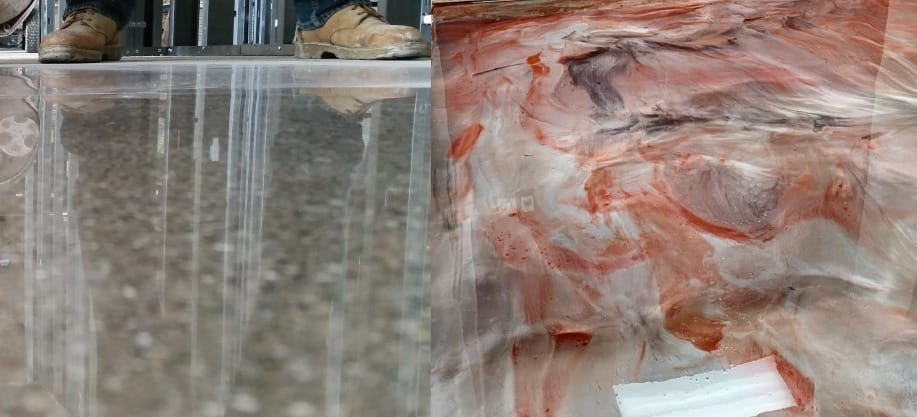Maintaining an untreated concrete floor can be challenging, leading to issues like cracking and spalling. To ensure longevity and functionality, explore options like polished concrete and concrete floor coatings. In this article, we’ll compare the benefits of each solution to guide your project decisions.
Why Choose Coated or Polished Concrete Floors
Untreated concrete can quickly deteriorate, making coatings an attractive option.
Coated or polished concrete floors are nonporous, avoiding the collection of dirt, mold, and bacteria. Unlike traditional options like carpet and tile, coated floors are easy to sanitize, making them ideal for commercial and residential spaces.
Polished Concrete vs. Epoxy Floor Coatings
When deciding between polished concrete and epoxy coatings for your surfaces, it’s essential to understand the unique advantages each option offers.
Polished Concrete: Aesthetic Appeal and Durability
A polish finish applied to concrete offers versatility and durability, making it suitable for many settings. The glossy appearance of polished concrete contributes to the aesthetic enhancement of spaces, providing a sleek and visually appealing surface.
However, polished concrete is not just about aesthetics. The polishing process also solidifies the concrete, increasing its resilience and making it a cost-effective long-term solution.
Beyond its visual appeal, polished concrete surfaces are environmentally friendly, easy to maintain, and nonporous. These attributes make them an excellent choice for areas with heavy foot traffic, as they can withstand wear and tear while remaining easy to clean and hygienic.
Epoxy Coatings: Protection and Performance
In contrast, epoxy coatings offer exceptional protection and performance for concrete surfaces. Epoxy’s ability to adhere strongly to concrete and its resistance to stains, abrasion, and chemicals makes it a preferred option for various applications.
Epoxy coatings provide a seamless, solid surface that can withstand heavy usage, impacts, and harsh environmental conditions.
From enhancing aesthetics to providing industrial-strength protection, epoxy coatings offer versatility and can be tailored to suit the demands of different spaces.
Coatings vs. Polished Concrete: Which Is Right for Your Project
Polished concrete is much cheaper to maintain, whereas the coatings will require to be replaced every few years regardless of how much maintenance is done to them.
On the other hand, concrete coatings are applied over the substrate and may mask slight imperfections in the concrete.
In that case, the existing concrete surface’s state may decide for you. If you arrive at the job site to find extensive damage to the substrate, you won’t be able to polish the concrete without repairing or replacing the material.
When it comes to choosing between a concrete floor coating and polished concrete, you’ll have a number of different factors to consider—including the location of the installation, the end user’s needs and expectations, your budget, ideal maintenance plans, and more.
Finally, you’ll need to consider future repairs and maintenance.
Coatings scratch, but they can be replaced. In fact, they’ll absolutely need to be replaced. Some water-based epoxies only last for a few years! Repairing damage to a polished concrete floor is more extensive, but a high-quality floor will last for years with minimal maintenance.
What Is the Best Option for Concrete?
Whether you choose the strong and lasting protection of coated concrete or the attractive look of polished concrete, your decision should match what your project needs and your goals for the future.
When you understand the benefits and consider the costs of upkeep, you can confidently pick the solution that improves how well your space works and how nice it looks.
